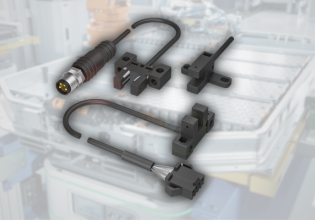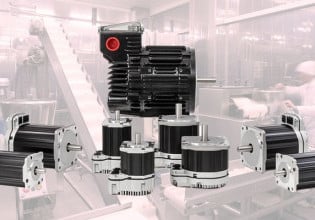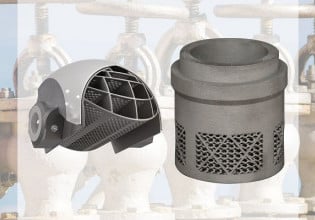Industrial Control Panel Design Standards and Best Practices
Industrial control panels are at the heart of control systems. Learn about the standards and regulations that dictate industrial control panel design for safety and efficiency, including NFPA 70, UL 60947-4-1, and NFPA 79.
See our previous article on industrial control panel design:
Introduction to Industrial Control Panel Design
In the previous article, we covered the steps required to design an industrial control panel successfully. This article will go deeper into some control panel design concepts, focusing on standards and regulations and some of the industry's best practices.

Figure 1. An industrial control panel is at the core of a control system, containing electrical and control devices. Image used courtesy of Canva
Standards for Industrial Control Panel
Industrial control panels (ICPs) contain electrical devices and control devices. Because of the different types of components, several standards and regulations apply to ICP design, production, and installation. ICPs must comply with these standards to ensure safety and performance.
Below is a list of the most relevant standards that guide ICP design.
1. NFPA 70
The NFPA 70 is known as the National Electrical Code (NEC) and is issued by the National Fire Protection Association. The NEC code regulates the safe installation of components and wiring for all residential, commercial, and industrial electrical systems. Industrial control panels fall under the industrial electrical system category.
NFPA70 applies to electrical installations in all of the United States, but it is adaptable to meet additional local regulations at the state level.
NFPA70 is a comprehensive book, nearly 2,000 pages long. It covers many electrical topics extensively and should be approached with the full understanding that it requires electrical fabrication or engineering qualifications for most tasks.
Among some of the topics and definitions that can be found in the NEC are:
-
Circuit protection.
-
Safe clearances inside and around control panels.
-
Voltage limitations. 600 V maximum for control panels.
-
Wiring clearances, routing, and materials.
-
Temperature ratings for electrical devices inside an ICP.
-
Required signage and warnings.
2. UL 60947-4-1 and UL 508
UL60947-4-1 is the standard for industrial control equipment and is a result of the harmonization between IEC 60947-4-1 and UL 508. The Underwriters Laboratory issued this standard. UL 508 was, for many years, the key standard for control equipment in the United States, but many industrial equipment categories have been superseded by UL 60947 in a multi-year phase-out program. However, control equipment built before that year still complies with the entirety of UL 508.
Some of the areas of control equipment covered by UL 60947-4-1 and UL 508 standards are:
-
Feeder sizing.
-
Group motor design.
-
Motor load individual circuits.
-
Load circuits for heater and lighting load.
-
Guidelines for power circuit wiring.
-
Guidelines for control circuit design.
-
Branch protection for control circuits.
3. NFPA 79
NFPA 79 is another standard from the National Fire Protection Association. This standard delves deeper into wiring regulations for industrial machines, including control panels that operate at 600 V or less.
NFPA 79 helps with the proper selection of wire sizes and provides guidelines for wiring installation, including the specifications for wire trays and conduits. NFPA 79 is a key standard for ICP design, considering that space is usually constrained due to the numerous devices installed inside.
Best Practices for Industrial Control Panels
Now that we have reviewed the most important standards that regulate control panel design, let us look at some best practices. This section enumerates these best practices in no particular order.

Figure 2. Labeled wires in an industrial control panel. Image used courtesy of Canva
General
-
Ensure the panel has enough space to accommodate all devices, with sufficient gaps between them when needed. If the surrounding area is not a major concern, always design for proper spacing between components to improve heat dissipation and make future additions simpler.
-
Similarly, ensure that wire trays and ducts are sized appropriately, considering the amount and size of the cable to be run through them.
-
Label devices and wires. The benefits of quickly finding and tracing wires are underestimated. Sometimes, the single action of trying to locate a wire inside a panel can translate to long production outages. Unfortunately, there are still many panels out there that do not follow this practice. In many cases, the labels are lost over time and never replaced.
Figure 3. Supplemental electrical protection. Image used courtesy of Canva
Electrical
-
Proper electrical grounding is critical. Follow grounding rules established in the standards and use high safety factors when able to do so. Improper grounding is among the top causes of failure of control devices.
-
Include auxiliary circuit breakers and fuses when possible. Breaking down and splitting power branches inside the ICP is preferred when the available space allows it.
-
Use shielded cable.
-
Separate sensitive devices and wires from high-power elements. For example, CAN bus and Profibus wires should not be near the main power supply cables. Electromagnetic noise from these cables can affect the transmission capabilities of control and bus cables.
-
Install labels and warnings as required by the standards, and include additional warnings for residual risks.

Figure 4. Cable management is crucial in ICP design. Image used courtesy of Arimon
Wiring
-
Design using a CAD tool that helps optimize wiring routes. Doing this helps save on material costs and reduce wire installation time.
-
Run wires vertically or horizontally, never diagonally. Never run wires in front of any devices.
-
Use stranded wire whenever possible. Stranded wire provides better heat dissipation and bends more easily than solid wire.
-
Leave sufficient wire slack for future use. Always conceal wire slack under the main wire way, never inside the wire routes near devices.
Control System Safety and Efficiency
There are many considerations, standards, and regulations to designing an ICP for safety and efficiency, as ICPs are the core of a control system and play a critical role in a wide range of applications and industry sectors.







